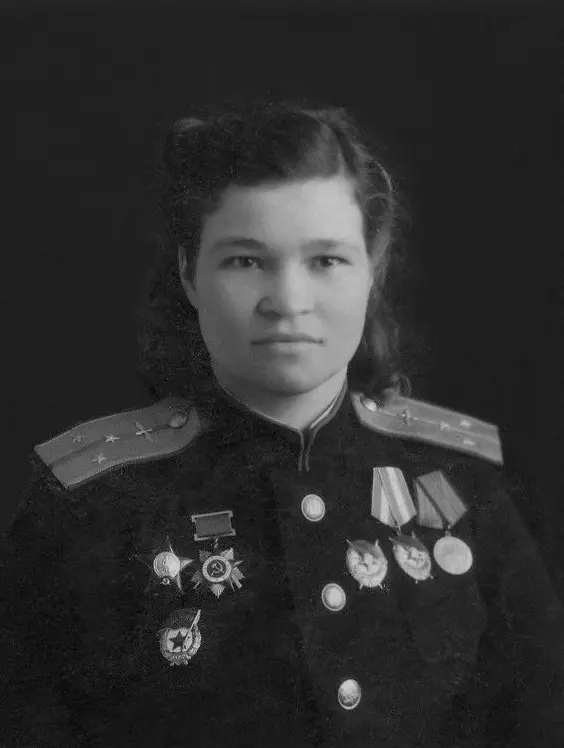The Night Witches of World War II: How an All-Women Soviet Bomber Regiment Haunted the Nazis
- Harriet Wilder

- Aug 20
- 5 min read
In the frozen skies above the Eastern Front, German soldiers feared many things: artillery bombardments, strafing runs, and advancing Soviet tanks. But one of the most terrifying sounds of the war was eerily quiet. It was the whooshing of wind over canvas wings, like a broomstick cutting through the night air. Soldiers swore it sounded like witches sweeping down from the darkness. When they heard it, they knew bombs would soon follow.
That sound came from the Polikarpov Po-2 biplanes of the Soviet Union’s 588th Night Bomber Regiment – a unit made up entirely of young women. Dismissed by many at first, they became one of the most effective and feared air regiments of the Second World War. The Germans nicknamed them Nachthexen, or “Night Witches,” a title meant as an insult but worn by the aviators as a badge of honour.

Birth of the Regiment
The idea for the unit came from Major Marina Raskova, one of the Soviet Union’s most famous aviators and often called the Russian Amelia Earhart. By the 1930s, aviation held great prestige in the USSR, and many young women trained in flying clubs. Raskova herself had set long-distance records and was a national celebrity.
When Nazi Germany invaded in June 1941, women joined the Red Army in huge numbers. Thousands fought on the front lines as snipers, medics, and partisans. But female pilots were barred from combat. Raskova began receiving letters from women across the country asking why they could carry rifles and grenades but not fly planes in battle. She took the case directly to Joseph Stalin, who agreed to form three all-female air regiments:
586th Fighter Aviation Regiment (Yak-1 fighters)
587th Bomber Aviation Regiment (Pe-2 dive bombers)
588th Night Bomber Aviation Regiment (Po-2 night bombers)
The 588th, later renamed the 46th Taman Guards Night Bomber Aviation Regiment, became the most famous.
Most recruits were teenage girls and university students in their late teens or early twenties. They trained in a condensed one-year programme covering navigation, mechanics, gunnery, and flying. As one pilot later recalled:
“We were young, eager, and ready to give everything. None of us thought of failure – only of flying.”

Life as a Night Witch
Conditions were harsh from the beginning. The Soviet military had no women’s uniforms, so the pilots were issued oversized men’s boots and flight suits. They stuffed rags in their footwear to make them fit and patched up clothing against the freezing cold.
Their planes were even worse. The Po-2 biplane was outdated by the late 1930s, originally designed for crop-dusting and training. Built of wood and canvas, with open cockpits, the aircraft had a top speed of just 90 mph (145 km/h). German pilots mocked them as “sewing machines” or “flying coffins.”
Each plane carried only two bombs, one under each wing. To save weight, the women flew without parachutes. If captured, they carried pistols with a single bullet reserved for themselves.

Yet the Po-2 turned out to be perfectly suited for night harassment bombing. German radar couldn’t detect the wooden planes. Enemy fighters often stalled trying to intercept them because they flew so slowly. And their ability to take off and land in fields or makeshift runways gave them flexibility larger bombers lacked.
“It was a coffin with wings,” one pilot admitted, “but it never let me down.”
Tactics of Terror
The regiment developed ingenious tactics. They usually flew in groups of three: two planes would draw the attention of searchlights and anti-aircraft guns, while the third cut its engine, glided silently over the target, dropped bombs, and restarted its engine to escape.
This gliding approach created the infamous broomstick sound that earned them their nickname. By the time German soldiers heard it, the bombs were already falling.

Each crew flew multiple missions per night – sometimes as many as 8 to 18. They landed, refuelled, rearmed, and went straight back into the air. The pace was relentless, especially in the brutal Russian winters.
The psychological impact was immense. German troops began to dread the night, knowing the Night Witches might arrive at any moment. One captured soldier confessed:
“We couldn’t get any sleep. The women kept us awake, night after night. We hated them, and we feared them.”
Famous Night Witches
Several members of the regiment became legends in their own right.
Nadezhda Popova flew over 850 missions. On one sortie, her plane returned riddled with 42 bullet holes – including holes in her helmet – yet she survived.
Yevdokiya Bershanskaya, the regiment’s commander, held the unit together through gruelling campaigns and was one of the most respected leaders in the Soviet Air Force.
Irina Sebrova set the record with 1,008 sorties – more than any other Night Witch.
Katya Ryabova and Nadya Popova once flew 18 missions in a single night.
Despite sexism from male counterparts, who doubted their skills, the Night Witches proved themselves again and again. By the end of the war, many male pilots openly respected them.

Combat Record
From their first operation in October 1941 to the end of the war, the Night Witches flew over 23,000 sorties and dropped more than 3,000 tons of bombs. Their raids destroyed warehouses, bridges, fuel depots, and enemy positions across the Eastern Front.
Key operations included:
Battle of the Caucasus (1942–1944) – defending Vladikavkaz and disrupting German supply lines.
Kuban Bridgehead (1943) – softening Nazi defences on the Taman Peninsula, earning them the title of Guards regiment.
Crimean campaigns (1943–44) – supporting Soviet offensives during the liberation of the region.
Poland Offensive (1944) – striking German positions in Warsaw and helping Soviet advances.
By war’s end, 23 members had been awarded the title Hero of the Soviet Union, the country’s highest honour.
Legacy of the Night Witches
Despite their heroism, the Night Witches were excluded from the 1945 victory parade in Moscow – officials claimed their planes were “too slow” to participate. After the war, women were once again pushed out of Soviet combat aviation.

Still, their story endured. In later decades, veterans wrote memoirs, and their reputation grew. Today, the Night Witches are remembered not only as fearless aviators but also as trailblazers for women in combat. Their ability to turn flimsy crop-dusters into weapons of terror remains one of the most extraordinary chapters of the Second World War.
As Nadezhda Popova once said:
“We were simple girls, but we had a cause. We wanted to defend our country. And we did it with everything we had.”
Conclusion
The Night Witches proved that courage, determination, and ingenuity mattered more than equipment or expectations. With wooden planes, oversized boots, and sheer willpower, they haunted one of the most powerful armies in the world. Their story is not only about war, but also about resilience, equality, and the unbreakable spirit of those who refuse to be underestimated.

Sources
Anna Krylova, Soviet Women in Combat: A History of Violence on the Eastern Front (Cambridge University Press, 2010)
Bruce Myles, Night Witches: The Amazing Story of Russia’s Women Pilots in World War II (Academy Chicago, 1981)
Svetlana Alexievich, The Unwomanly Face of War (Random House, 2017)
Ruxandra Guidi, “The Night Witches,” NPR, 2011
Marina Raskova, Soviet archives on the formation of female regiments







































































































Comments